QC Inspector
60+ QC Inspector Interview Questions and Answers
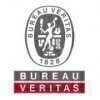
Asked in Bureau Veritas

Q. What do you inspect before, during, and after welding?
Before, during, and after welding, various aspects are inspected to ensure quality and safety.
Before welding, the materials and equipment are inspected for cleanliness, proper setup, and suitability for the welding process.
During welding, the inspector checks for proper welding technique, adherence to welding procedures, and the quality of welds being produced.
After welding, the inspector inspects the completed welds for defects such as cracks, porosity, incomplete fusion, an...read more

Asked in Bureau Veritas

Q. How do you inspect and release fabrication spools before sending them to the erection site?
Fabrication spools must be inspected thoroughly before releasing to the erection site.
Check for any defects or damages on the spool.
Ensure that the spool meets the required specifications and standards.
Verify that all necessary documentation and certifications are in place.
Perform visual and dimensional inspections on the spool.
Conduct hydrostatic testing to check for leaks or other issues.
Ensure that the spool is properly labeled and identified.
Coordinate with other departme...read more
QC Inspector Interview Questions and Answers for Freshers

Asked in Bureau Veritas

Q. What you will in check RT films ? What is sensitivity calculation
In RT film check, I will inspect for any defects or anomalies in the radiographic image. Sensitivity calculation is the measure of the smallest detectable flaw.
Inspect for any defects or anomalies in the radiographic image
Check for proper exposure and contrast
Ensure that the film is free from any artifacts or processing errors
Calculate the sensitivity of the film to detect the smallest flaw
Use a penetrameter to determine the sensitivity of the film
Compare the penetrameter ima...read more

Asked in Bureau Veritas

Q. What will you check during Ground Inspection or IMIR?
I will check both Ground Inspection and IMIR for quality control purposes.
I will check the ground inspection report for any discrepancies or issues with the physical product.
I will also review the IMIR (In-Process Material Inspection Report) to ensure that all necessary inspections and tests have been completed.
I will verify that all required documentation is present and accurate.
I will communicate any issues or concerns to the appropriate parties for resolution.
Examples of i...read more

Asked in Tata Motors

Q. What is the least count of a vernier caliper?
The least count of vernier caliper is the smallest measurement that can be read on the scale.
The least count is determined by the number of divisions on the vernier scale and the main scale.
It is usually 0.02 mm or 0.001 inches for a standard vernier caliper.
To determine the least count, subtract the main scale reading from the vernier scale reading.
For example, if the main scale reading is 5 mm and the vernier scale reading is 0.4 mm, the least count is 0.01 mm.

Asked in MagicBricks

Q. What are your qualifications?
I have a Bachelor's degree in Quality Control and 5 years of experience in inspecting products for quality assurance.
Bachelor's degree in Quality Control
5 years of experience in inspecting products for quality assurance
QC Inspector Jobs
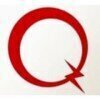

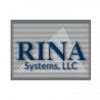

Asked in Emirates Steel Industries

Q. What steps do you follow in the work area for Quality Control?
The steps following in work area about Quality control include inspection, testing, documentation, and reporting.
Inspecting the product or process
Testing the product or process
Documenting the results of inspection and testing
Reporting any issues or defects found
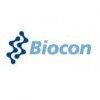
Asked in Biocon Limited

Q. Hplc principle technique used in Separation of mixture of use in compound use in the mixture
HPLC (High Performance Liquid Chromatography) is a technique used for separating mixtures of compounds based on their interactions with a stationary phase and a mobile phase.
HPLC separates compounds based on their affinity for the stationary phase in a column
It is commonly used in pharmaceutical, environmental, and food industries for analyzing and purifying compounds
Examples of compounds separated using HPLC include drugs, pesticides, amino acids, and vitamins
Share interview questions and help millions of jobseekers 🌟


Asked in Krishna Group

Q. what is Welding and what are the different types of welding
Welding is a process of joining two or more metal pieces together by heating and melting the surfaces to be joined.
Different types of welding include MIG welding, TIG welding, Stick welding, Flux-cored welding, and Arc welding.
MIG welding uses a wire electrode and a shielding gas to join metals.
TIG welding uses a tungsten electrode and a filler metal to join metals.
Stick welding uses a consumable electrode and a flux coating to join metals.
Flux-cored welding uses a tubular wi...read more
Asked in IVY TPI Services

Q. Mm, cm what is quality what is inspection compnent kta h its extra extra.
The question is unclear and does not make sense.
The question needs to be rephrased or clarified.
Quality refers to the degree of excellence of a product or service.
Inspection component refers to the specific aspect or part of a product or service that is being inspected.
KTA is not a commonly used term in the context of quality inspection.
It is important to have clear communication and understanding in the field of quality inspection.

Asked in Bureau Veritas

Q. What will you check during spool erection?
During spool erection time, I will check for proper alignment, fit-up, welding quality, and dimensional accuracy.
Check for proper alignment of spool components
Ensure fit-up is correct and there are no gaps or misalignments
Inspect welding quality for defects such as cracks, porosity, and incomplete fusion
Verify dimensional accuracy of the spool according to the design specifications
Check for any damage or corrosion on the spool components

Asked in Allena Auto Industries

Q. What do you know about Design?
Design refers to the process of creating a plan or blueprint for a product or system.
Design involves identifying the problem, researching, brainstorming, and creating a prototype.
It includes considering factors such as functionality, aesthetics, usability, and cost.
Examples of design include graphic design, industrial design, and software design.
Design is an important aspect of quality control as it ensures that products meet the desired specifications.
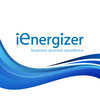
Asked in iEnergizer

Q. How did you hear about this position?
I heard about this position through a job search website.
I found the job posting on Indeed.com
I saw the position listed on LinkedIn
A friend who works at the company informed me about the opening
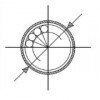
Asked in NRB Bearings

Q. How can the bearing life be increased?
Increase bearing life by proper lubrication, correct installation, and regular maintenance.
Use the correct type and amount of lubrication for the bearing
Ensure proper installation to prevent misalignment and excessive loading
Implement regular maintenance schedules to monitor bearing condition and replace worn parts
Avoid contamination by keeping the bearing clean and protected

Asked in Maruti Suzuki

Q. What is the full form of API, and what are the differences between PSL1 and PSL2?
API stands for American Petroleum Institute; PSLs define product quality levels in oil and gas industry.
API: American Petroleum Institute, a standard-setting organization for the oil and gas industry.
PSL 1: Lowest level of product quality, suitable for non-critical applications.
PSL 2: Higher quality level, suitable for more critical applications with stricter requirements.
Example: PSL 1 may be used for basic piping, while PSL 2 is used for high-pressure systems.

Asked in Aquapharm Chemicals

Q. Can you provide a brief introduction about yourself?
Detail-oriented QC Inspector with 5 years of experience in ensuring product quality and compliance in manufacturing environments.
Over 5 years of experience in quality control in the manufacturing sector.
Skilled in conducting inspections and audits to ensure compliance with industry standards.
Proficient in using various measurement tools and techniques, such as calipers and micrometers.
Experience in documenting findings and preparing reports for management review.
Strong commun...read more

Asked in Titan Company

Q. Are you able to travel long distances?
Yes, I am willing to travel long distances for work.
I have no issues with traveling long distances for work
I am comfortable with long flights and car rides
I have traveled long distances for work in the past, including international trips

Asked in Srijan Realty

Q. Can you read drawings?
Yes, I can read drawings.
I have experience in interpreting technical drawings and blueprints.
I am familiar with symbols, dimensions, and tolerances used in drawings.
I can identify different views and sections in a drawing.
I can also use software like AutoCAD and SolidWorks to view and analyze drawings.
For example, I have inspected welding drawings for a construction project and ensured compliance with specifications.
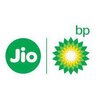
Asked in Reliance BP Mobility

Q. How do you maintain staff morale during periods of heavy workload?
To maintain staff during overwork, provide breaks, offer support, prioritize tasks, communicate openly, and reward hard work.
Provide regular breaks to prevent burnout
Offer support and resources to help manage workload
Prioritize tasks to ensure important deadlines are met
Communicate openly about expectations and challenges
Reward hard work with incentives or recognition

Asked in Bureau Veritas

Q. What are hydro test procedures?
Hydro test procedures involve filling a vessel or pipeline with water and pressurizing it to check for leaks or structural integrity.
The vessel or pipeline is filled with water
The water is pressurized to a predetermined level
The pressure is held for a specified amount of time
The vessel or pipeline is inspected for leaks or structural damage
If no issues are found, the water is drained and the vessel or pipeline is deemed safe for use
Examples include testing the integrity of a ...read more

Asked in Tata Motors

Q. What is surface tension
Surface tension is the force that causes the molecules on the surface of a liquid to stick together.
Surface tension is caused by the attraction between the molecules on the surface of a liquid.
It is what allows insects to walk on water and why water forms droplets on a surface.
Surface tension can be affected by temperature, pressure, and the presence of other substances in the liquid.
It is measured in units of force per unit length, such as dynes per centimeter or newtons per...read more

Asked in NRB Bearings

Q. What is the manufacturing process for bearings?
The process of making bearings involves shaping metal into the desired shape, heat treating, grinding, and assembling components.
Shaping metal into the desired shape using processes like forging or casting
Heat treating the metal to improve its strength and durability
Grinding the metal to achieve precise dimensions and smooth surfaces
Assembling components such as inner and outer rings, balls, and cages to create the final bearing product
Asked in Al Kaabi Contracting and Trading

Q. What are the duties of a QC inspector?
A QC inspector is responsible for ensuring that products meet quality standards and specifications.
Inspect products to ensure they meet quality standards and specifications
Document and report any defects or non-conformities
Perform tests and measurements to verify product quality
Collaborate with production team to identify and resolve quality issues
Maintain records of inspections and test results

Asked in Abu Dhabi Oil Refining Company

Q. What is QC and do not compromise on quality job
QC stands for Quality Control, which involves ensuring that products or services meet specified standards and requirements.
QC involves inspecting, testing, and evaluating products to ensure they meet quality standards
QC helps identify defects or deviations from specifications
QC involves implementing processes and procedures to maintain consistent quality
Examples: conducting visual inspections, performing measurements and tests, documenting results

Asked in Reliance BP Mobility

Q. How do you perform a hydrotest during maintenance?
Hydrotest during maintenance involves filling the equipment with water or another liquid to check for leaks or structural integrity.
Ensure the equipment is properly prepared for the hydrotest, including cleaning and removing any debris.
Fill the equipment with water or another suitable liquid to the specified pressure level.
Monitor the equipment for any leaks or pressure drops during the test.
Record the results of the hydrotest and take appropriate action based on the findings...read more

Asked in Maruti Suzuki

Q. What is the count of bevel protectors?
The list count of bevel protectors refers to the quantity of these protective devices used in various applications.
Bevel protectors are used to safeguard the edges of tools and equipment.
The count may vary based on the project requirements or specifications.
For example, in a construction project, you might need 50 bevel protectors for different tools.
It's essential to maintain an accurate inventory to avoid delays in work.

Q. Do you have experience with furnaces?
Yes, I have experience working with furnaces in quality control, focusing on temperature regulation and material integrity.
Conducted regular inspections of furnace operations to ensure compliance with safety standards.
Monitored temperature variations and made adjustments to maintain optimal conditions.
Performed material testing post-furnace processing to assess structural integrity.
Collaborated with engineering teams to troubleshoot and resolve furnace-related issues.

Asked in Reliance BP Mobility

Q. How do you identify an isometric drawing?
Isometric drawings show a 3D object in a 2D format with all three dimensions represented equally.
Lines that are parallel in the 3D object will also be parallel in the isometric drawing
All three axes (x, y, z) are equally foreshortened
Angles between axes are 120 degrees
No vanishing points like in perspective drawings

Asked in M E Energy

Q. What are the different types of welding defects?
Welding directs include various methods used to join materials, each with unique characteristics and applications.
Arc Welding: Uses an electric arc to melt and join metals. Example: Shielded Metal Arc Welding (SMAW).
MIG Welding: Metal Inert Gas welding, ideal for thin materials. Example: Gas Metal Arc Welding (GMAW).
TIG Welding: Tungsten Inert Gas welding, known for precision. Example: Gas Tungsten Arc Welding (GTAW).
Resistance Welding: Joins materials through heat generated ...read more
Interview Questions of Similar Designations
Interview Experiences of Popular Companies








Reviews
Interviews
Salaries
Users


















